|
Let’s talk about the white elephant in the classroom The post “There is no place for computers in early childhood” on my ‘Dance with me in the Heart’ facebook page set off one of the most lively conversations since I launched the page in November 2012. The title of the post is an accurate statement, intended to attract readers’ attention. Nature needs nurture Now that I have your attention, let me explain why there is no place for computers in the child’s early years. What happens in the young child’s developing mind-brain-body when she uses computers interferes with what is supposed to happen in a young child’s mind, brain and body. Just one consideration is movement. Movement in those early years builds the brain. It literally constructs the brain using body-mind-brain sequences trialled and fine-tuned over thousands and thousands of generations. Educational kinesiologist Carla Hannaford states, “Movement is the architect of the brain”, and you know what happens when someone has a stroke in the brain. The body is affected because body and brain are indivisibly connected. Being in front of a screen precludes the movement that builds brains. Novelty is a brain hit The human (brain) loves novelty, and that is one of the drivers behind the curiosity of the young child. It is that curiosity that generates the child’s exploration, rolling, touching, smelling, tasting, balancing, moving, jumping, comparing, weighing..., all of which build not only the brain (as important as that is), but contribute to building a literal body of knowledge unique to that child. Every body of knowledge is unique to the individual because the connections-skills-competencies that are developed, are dependent on the experiences the individual has. It is the human brain’s love of novelty that assures infants and young children will physically follow their curiosity and explore everything in their environment. Novelty in information technology Who could fail to be impressed with the novelty within the range of information-technology hardware available? Who could fail to be impressed by the functions and capabilities of the different devices, and similarly impressed by the vast range of programs-apps available for those computerised devices? It truly is mind boggling. No doubt about it, information-technology hardware and software designer-engineers are good. They know how to serve up the novelty required to keep aficionados wanting to upgrade, which not coincidently, keeps the shares of their respective corporations afloat. Novelty: the two-edged sword Normal human fascination with the novel capabilities of technology drives much of the push to have computers as a major factor in every child’s ‘education’, from tertiary where it is a most suitable tool, to early childhood where it couldn’t be more unsuitable. Like it or not, there will also be a commercial element behind this push to have computers introduced in the early years. Research shows children’s buying behaviours are largely set by age 6-7, so product allegiance at an early age is not something manufacturers will have overlooked. Further, if teachers can be persuaded that information-technology has benefits for early childhood, those same teachers become the agent of persuasion to others within their profession. Child magic wins And that is what has happened. Teachers who are fervent about the capabilities of the technology have omitted to look beyond the magic of the device toward the magic of the young child. In their delight in the technology, teachers have overlooked
Child-centred not skills-based The arguments put forward by those who exhort the use of computers in early childhood do not line up with the requirements for young child’s unfolding, and/or are based on ‘logic’ and research about the competency/skill-sets that can be gained by very young children using computers. There is no denying that young children can build up impressive computer skills. Indeed, young children have baled out many tech-illiterate parents and grandparents with their expertise. However, it is the role of education professionals to have the child’s wellbeing to the fore and weigh up the benefits of the learned competencies-skill-sets-expertise against the developmental priorities of the human child - mind, brain and body. It is not that computers are ‘bad’ (hell no, I love my Mac); the issue is about age and developmental appropriateness. Start with the hardware The brain is the hardware, the original ‘computer’. Computer ‘nerds’ don’t try to run software while the hardware is still under construction, and the young child’s brain (hardware) is under construction. At birth the brain is 25% of its adult size, by three years it will be between 85% - 90% of its adult size. Construction happens in the brain when the child interacts in the world in three dimensions - not in two dimensions. A two dimensional screen encounter is, by definition, impoverished in sensory input. There is not enough sensory information with which to construct a body of knowledge involving multiple senses and multiple intelligences. The child must interact with their mind, brain and body. That is how they are designed. In computer terms, you wouldn’t expect brilliant performance from a compromised operating system running on a miniscule amount of RAM. 3 is the magic number At three years of age the actual brain construction is almost done. That is one of the reasons the first three years of the child’s life are so important, the bulk of the child’s hardware is built, complete with individualised default settings. The child uses the next three to four years installing the programs that three dimensional living and playing provide free with each child, all of which will be the exact right platform to launch into the next phase/mode of information processing in the neocortex at age 6-7. These three dimensional play programs prepare the way for the neocortex to handle abstract symbolic learning. It is beyond me why education professionals would risk compromising and/or damaging this exquisite genetically fine-tuned design by introducing 2D technology when it is not age appropriate? What is the hurry? The real world rules There is general confusion among teachers about learning in the real three dimensional (3D) world, and in the virtual two dimensional (2D) world. When children play in the real world with all of their dimensions (physical, emotional, intellectual and spiritual - at least), they use all of their senses (19 recognised so far) to build a body of knowledge. This ‘body of knowledge’ that they ‘build’ is quite literal. The intelligence of the body learns how to do whatever it perseveres with: eg. to balance, crawl, sit, walk, or to deliver an ace of a tennis serve, or to become the barista who can use the coffee machine and make an awesome flat white - while the other barista who uses the same coffee machine makes rejects every time. One barista can learn while the other barista is slow on the uptake. Why? Like all learning in the real world, barista learning is learning in all dimensions. 3D learning includes the body intelligences, which take into account details like the grind of the bean, the humidity in the air, the temperature of the milk, the duration of each phase... and on and on. In the real world the choices are many - maybe even infinite. Playing and operating in the real world is the way people learn how to learn. A child is a spirit, in a body, who feels, and thinks - in that order So important is this practical body of intelligence that according to play researcher Stuart Brown, JPL (Jet Propulsion Laboratory) NASA and Boeing will not hire graduates for their research and development teams, no matter how great their degrees, nor how prestigious the university that awarded the degrees, unless the applicants have done things with their hands, made things and fixed things, like making rafts, building flying foxes, pulling apart toasters and fixing cars. People who have not worked with their hands cannot problem-solve in real life, and this because the hand and brain are linked in ways neuroscientists believe to be seminal to the actual structure of the neocortex - the great thinking human brain - and in its development. So get out the clay, the sellotape, the flax and the cardboard... our children should be making things in three dimensions, in the real world, ideally up until they are eleven years old when yet another cognitive shift occurs. 3 beats 2, exponentially 2D learning is just that - working in two dimensions (width, length - but no depth - literally and metaphorically) with predominantly 2 senses (hearing and sight), with binary choices. Yes, computers are ‘clever’, yes, even very impressive - and they are not the real world, they can only offer a virtual world. Even a ‘3D screen display’ is a 2D optical illusion. Virtual is an adjective meaning, “not physically existing as such, but made by software to appear so”. In a virtual world you cannot be there; you can only learn about it. It is little wonder most educators are confused and think computers are great. Schools rarely do experiential learning which would enable students to build for themselves a body of knowledge so critical for learning and problem solving. Rarely do teachers facilitate a real experience so their students can make knowledge from ‘the doing’ for themselves. Most commonly, we teachers task our students to ‘learn’ about things - i.e. google it/find it in a text/watch a video. In other words, we task them to seek information, to see what others have done-thought-felt. That’s the difference between having a delicious Middle Eastern meal - and reading the recipes. No comparison. The screen-spread virus in the human brain’s abstract-symbolic ‘processor’ All abstract symbolic metaphoric higher learning depends on the ability to think in images, and not only two dimensional images, but to think with the whole body of knowledge recalling every dimension of the image. For example, if I say ‘aardvark’ (the stimulus) your response will be as good as your experience of aardvarks. For some there will be no response at all, but for most of us we’ll recall a two dimensional image of an aardvark we saw in a text or on a screen. Among us, someone might have (improbably) kept an aardvark as a pet, and that person will have a body of knowledge about aardvarks. That person will know their habits, actions, communication vocalisations, reactions, smell, movements, bowel movements, texture of skin, of fur-hair... and on and on. It is all of THAT knowledge which is the aardark keeper’s rich and instant response in the mind-brain-body to the stimulus of the word ‘aardvark’. Now extrapolate out of that example and you will understand why computers short change young children who are just getting to explore, know and understand being here on this three dimensional planet. Further along in the child’s education teachers will speak about poultry, thrust, centrifugal force, thermodynamics, metamorphisis etc. The child, who may have picked up all sorts of information about those topics in front of a screen, simply cannot have the knowledge from which to work in the abstract in a meaningful way. Keeping hens, riding the zip wire, self induced giddiness, spinning with a full bucket of water, lighting fires, growing swan plants - real life living in three dimensions - that is what sets children up for the abstract symbolic processing we call reading, writing, and numeracy. After all, reading and writing are just recording in a way to stimulate the brain to recall-synthesise-amalgamate-create data from the body of knowledge existent. When the virus is deadly
You and I take it for granted that when someone offers a stimulus - e.g. the word ‘hedgehog’ - the brain will automatically offer a response and provide an image. If the child is lucky and did the real-life-3D-get-to-know-hedgehog-thing, the image-response will be multidimensional. What most early childhood teachers overlook is that this stimulus-image response is a learned skill, which every child can learn, as long as the conditions are right. So what are the right conditions that enable the brain to set itself up for imagining, creating and processing abstract symolic information? I have written an article that goes into this in more detail, but here is a short version: three dimensional experience builds up a body of knowledge which includes the actual images of the experience being available ‘in’ the brain. Children are curious and get into everything, so they build up heaps of images available in the brain. Are you still with me? Then when someone speaks (stimulus) about the little red hen (three stimuli there: little, red, and hen) and the grains of wheat (stimulus), the child calls up her images (response) of little, red, hens and wheat from her experience, and sets about moving-combining-synthesising her own images into a creation so she can make sense of the story/stimulus. Try this: maz sarkans vistu. No response? It isn’t the right stimulus for English speakers, maz sarkans vistu is Latvian for little red hen. This stimulus-response function is pure brain alchemy, and all higher learning is dependent on this function. There is a window for the brain-alchemy function The child isn’t born able to do this, the brain is not complete enough at birth. The child has to prepare and install this function through their exploration and play. In other words, the brain develops this function during a biologically determined window of time. Miss the window and the child (and society) is in serious trouble. This window happens to be in the early childhood years. Until recently this particular stimulus-response brain function has always been developed and installed like clockwork, but not any longer. There are many children who have so much screen time that the process is stymied. These children don’t develop the stimulus-response function, and to understand why that is, we need to look at how screens differ from real life. When I say to you, “the little red hen”, your brain responds to the stimulus with images. When the screen says to you, “the little red hen”, the screen (stimulus) supplies its own response; the image of the little red hen is there before you on the screen. There is nothing for your brain to do: no retrieving, no connecting, no synthesising, no creating... no growth and no development. Too much of this for a young child and the window is missed, and closes. Encepholograph readings of people watching screens read very close to brain dead, there is nothing for the brain to respond to. That’s fine if you want to blob out in front of a screen, but it is not fine for the human child building the functions of her ‘brain processor’, functions which will decide her ‘computing’ capabilities. Justification is the art of telling ourselves stories so we’ll feel better doing dodgy things One argument put forward by the pro-technology-in-early-childhood lobby is that we need to introduce computers at an early age because, like it or not, we are living in the age of technology. True. Many infants and children know what it is to be sidelined by their parents in favour of phones, screens, and/or computer games, and children learn to use whatever technology they are surrounded by. Almost every child comes from a home where there are smart phones, MP3 players and computers, and many spend the bulk of their waking time being entertained in two-dimensions. What these children lack is enough time living and playing in the 3D world. Too little screen time is not the burden of today’s child; quite the reverse. The ‘we use it as a tool’ story This week I have spoken with teachers who are enthusiastic about computers as tools - me too, this program I am working in now beats handwriting for speed any day. But for teachers to say computers encourage research skills, curiosity and creativity in early childhood is justification at best, and disingenuous at worst. There isn’t an child who has to be encouraged to research, to be curious or to be creative - they are all born that way. Young children just have to touch, they use all of their senses to get to know what they examine, they are fascinated. What we have to do is make sure they stay that way by ensuring their environment is as rich and harmonious as possible. Such an environment is always going to be in the three dimensional world. Sorry, a 2D tablet simply won’t cut it. Computer engineers, programers, designers wanted: Apply if you are 7 or older Children who meet computers/screens after they have turned seven will have all the time they would need to become first class computer nerds because of the cognitive shift that occurs at 6-7 years. That shift enables the brain to engage in the mode of functioning where the two dimensional abstract virtual world of computers becomes an appropriate field of play and learning. The few computer nerds I know started on a Commodore 64 in their teens. It was early enough. As for the argument that ‘children love them’, they love chocolate biscuits and cartoons too. That doesn’t mean a diet of chocolate or screens is good for them - or us. Both are addictive and addictions take us away from engaging in the rich living which Life offers. Age and stage appropriate Legality aside, we wouldn’t let a child of ten drive a car on the open road even if they could (and some can) because it is not age appropriate. We don’t start teaching children to drive before they are 15, even though they could learn, because there is no need to teach them until it is age appropriate. Instead, we use that freed-up time to offer/facilitate learning opportunities that are age appropriate. Let’s use the same restraint and wisdom with information technology. Don’t be sucked in Early childhood is not school - don’t be fooled-wooed into thinking your children need technology at your place. They don’t. Use this precious window in each child’s life to support their 3D Play in Real 3D Life. (References for this blog are listed in the PDF, see under 'Articles '.)
4 Comments
Like the littlest doll inside a set of Babushka Dollies, the baby in the womb is supported and provided for by the womb in which she is enclosed. The womb and placenta in their turn are supported and provided for by the mother. The mother in her turn is supported and provided for by the Earth Mother. This nesting is sublime in design. It is the design of every baby to bond, firstly in and with the womb. After the birth, the second bonding is between the baby and her mother. When that partnership is in firmly place, it acts as the platform for the third bonding which is between the baby and the earth. These three bondings are essential for growing healthy Earthlings, but if the conditions are not right they can fail. earthearthearthearthearthearthearthearthearthearthearthearthear earthearthearthearthearthearthearthearthearthearthearthearthear Great expectations #1 When a baby is born he is expecting one thing and one thing only, to be on or within sight and/or sound of his Mother. Regardless of what the culture might tell you, there is a very good Nature reason for this close, warm, physical partnership. During pregnancy (gestation) the baby depends on the nurturing from the mother via the womb which serves as a ‘nest’. There he grows his little body and structures to the point where they can survive being ‘outside of the nest’ (without medical assistance). The pattern of Nature is to grow the little Earthling to the stage where he can ‘get out of the nest’ safely and keep on with his growing on ‘the outside of the nest’. Ashley Montague called this ‘outside the nest’ period exterogestation. Get it right in the beginning Everyone understands that the pregnant mother and her baby are ‘a unit’. What our culture has lost sight of is that after the birth the Mother and the baby are still a unit for exactly the same reasons as during pregnancy - the baby needs to be with or on the Mother while his little systems develop and grow to the level of functioning where they can regulate themselves, independently. This takes all of the first year while the sensory-motor brain gets itself up, running and fully functional. And that is only the start of the complex task of emotional regulation, and it is the 'mother matrix'* that acts as 'the trainer wheels' for this development. This close, warm, sacred partnership is the human baby’s Greatest Expectation and meeting it needs to become our first priority as individuals and as a nation if we are to align with the Wisdom of Nature and Nurture. It is the safety and security of the close relationship that allows the baby’s systems to relax into the harmonious state, the state that frees him to enter the experiences which simultaneously grow and unfold him. * If it cannot be the mother then there must be a substitute set of 'trainer wheels of nurture': father, aunty, grandmother.... In the childcare situation centres are implementing primary care (one main carer for the child, their trusted other**) because not to do so is cruelty. Failing to provide primary care ignores every baby's and child's greatest need - to have an emotional anchor for emotional safety and stability. ** I am not keen on the term 'key teacher' because it elevates teaching above caring. Humans of every age would choose caring over teaching any day if they were looking to the big things like happiness, belonging and love. How much more-so for the young child who has to have caring to unfold her potential so that she can make the most of any teaching? Great expectations #2 Having established the relationship, the safe place from which to continue growing and unfolding, the child is expecting freedom: the freedom to move, freedom to explore and freedom to play. When not ‘in the arms/on the back’ of her Mother, the baby is driven to move. The patterns of the movement are within the child but the child needs the freedom to respond to those urges. In responding, the child not only unfolds the pattern, but she grows both her body and brain at the same time. Carla Hannaford points us in the right direction when she reminds us, “Movement is the architect of the brain.” This is co-creation, and the starting position for this ballet of unfolding and growing is on the back, on the ground (or the floor). Every baby who is lucky enough to be nurtured naturally by being placed on the back - and not in a bouncer, high chair, jumping swing, ‘walker’, ‘sitter’ etc - will demonstrate the Wisdom of Nature by unfolding perfect balance, agility and posture. These children think and process, look and move very differently from those whose big-people-in-their-lives didn’t know how to support them naturally. Children allowed the freedom to move are at home, balanced and agile in their bodies, they are set up perfectly for the exploration and adventurous play that is coded into them, awaiting its turn to unfold and grow. Great expectations #3 Every child expects to play. They are not expecting our obsession with literacy and numeracy, they are expecting to play. There are patterns of play coded into the Earthling just waiting for the chance for expression, and in the expression of those play patterns the child will grow and develop. Many of human play patterns are patterns shared by others in the mammal family, patterns that grow agility and social competence, build strength and usher in pleasure: think running, jumping, leaping, swinging, tug-of-war, chasey, rolling, tumbling, wrestling. These important patterns are very often stopped or forbidden by grown-ups who are unaware of the benefits to the child. Better to allow the play patterns, and if you need to, divert them to a more suitable setting. Play is the whole point of being human Human Earthlings have an ‘old mammalian brain’, the limbic system. It is the emotional-relational brain, and if you have seen documentaries about the complex social communication systems in wolf packs, horse herds, whale pods... you will know that growing this part of our being is where our happiness lies: the ability to get on gracefully and graciously with our own kind. As every mammal instinctively knows, it is play that grows this part of our brain and being. You don’t see too many dolphins or cows out there with alphabet friezes and counting charts - that stuff all belongs to the neocortex, the ‘great thinking brain’ or the ‘new mammalian brain’. The neocortex itself requires a fully developed limbic system for it’s own intelligence to be able to unfold its limitless potential. As in building any structure - including the structure of the brain - every effort goes into completing the foundations before you think about building the ground floor or the first floor. By analogy, our obsession with literacy and numeracy (both amazing human skills) is destructive when it takes time from the focused play required for constructing the ‘foundations and ground floor.’ This obsession with literacy and numeracy is politically driven and is the equivalent of building the roof onto the concrete-foundation pad. earthearthearthearthearthearthearthearthearthearthearthearthear Great expectations #4 Every child expects to play outside in Nature - that is, they do until they contract the fatal sedentary-stay-inside-and-be-entertained-habit. Outside, all of the things we have talked about come into their own. The child is secure and can regulate her own emotional and physiological systems thanks to the ‘trainer wheels’ of that sacred first relationship, she has incarnated into her body and is at home there, thanks to the freedom of movement, exploration and play - and now she can go outside and play***. For hundreds of thousands of years every child has played outside. In doing so they have grown their sense of belonging beyond their parents, beyond their wider family-tribe-community, and into the part of Nature where they live. Many cultures recognise this stage of the ‘nested-bonding’ in their language by referring to Nature as kin. They speak about Mother Earth, Father Sky, Father Sun, Grandmother Moon. Many cultures refer to stones, mountains, rivers, plants and animals as brothers and sisters, or as the Lakota people sum it up, Mitakuye Oyasin, All Our Relations. This belonging is the belonging every Earthling is patterned to realise. It ushers in a contentment and grounding that underpins the life-journey. It includes - and goes far beyond - the ‘Belonging’ written into our NZ early childhood curriculum, Te Whariki. ***This is not the first time she has been out to play, she has been taken outside from the very beginning: into the garden, to the river, to the park, into the orchard, to the beach, into the bush... Just as the baby in the womb listened to the heart to know about her next matrix, the child imprints with Nature and the earth before shifting to the earth matrix. Great expectations #5 Children are expecting Life outside. For hundreds of thousands of years children have left the cave or the castle to play outside in the grass, the stream, the sand, the garden, the bush, the trees, the snow. What they have found in their particular eco-niche is family, All Our Relations - the green and growing ones, the swimmers, the slitherers, the crawlers, the hoppers, the winged ones, the four leggeds.... Depending on the culture and example of the big-people-in-their-lives, they have cared for these Earthlings, hunted them for food, taunted them for pleasure, killed them for power, and latterly poisoned them for convenience. The way you learn to behave with your wider family decides how you will care for the Family on Earth, including your own family when and if you make one. You model and meet this expectation when you understand All Life is Sacred and you live your Life accordingly. Children expecting Life outside are let down when we who control their environment betray them. Betray is a hefty word, but we do betray children when we strip the Earth of Life to make it convenient for us. Grass and mud are replaced with safety-surface and paving, trees are replaced with garish plastic climbing structures, bushes are replaced by garish plastic huts, gardens are not replaced. This modelling of gross disrespect for Life and the Earth is legal and ‘approved’ by the ministry of education. Lucky are the children in Europe where the actual eco-niche can be the childcare ‘centre’ itself - be it lake-side, mountain pasture, seaside, forest or copse. Nationally, we will know we are making progress in nurturing our children when our ministry gets wise enough to license programmes instead of its restrictive practice of issuing licenses for premises only. Great expectations #6 Every child is born longing for and expecting stories. As author Ursula Le Guin noted, “There have been great cultures that did not use the wheel, but there have been no societies that did not tell stories.” Stories and play combine to begin an alchemy in the neocortex, the alchemy of imaginative play. This uniquely human form of play is the foundation of symbolic, metaphoric and abstract thinking upon which all higher learning depends, and once again, it is the loop of creation. The child takes images stored from previous experience and overlays them into time-space reality creating a new reality. This reality is not a virtual reality, this reality is multidimensional and the child lives within it, in charge of her ‘world’, and modulating it. If that sounds a bit abstract, it is simple: The child pretends that the fallen tree is a house (overlays her house image onto the tree creating a new reality) and ‘climbs up the stairs to the bedroom’ (lives within her new reality in all of her human dimensions). She invites her friend to join her and tells her she can have the ‘top bunk’. Down in the kitchen hydrangea leaves ‘become’ plates, sticks become cutlery and conkers are the (metaphors standing for) hamburgers. This play becomes richer and richer the more children do it. The richer it becomes the more brain connections are made as images and symbols are recalled, combined, joined, synthesised, created. Every one of these neurological events creates the ‘brain-grunt’ that will power future symbolic abstract thinking, including reading, writing and calculus. Play researcher Stuart Brown notes that imaginary play with friends builds the social literacy (the ability to read people and interact with them cooperatively) that is crucial to a child’s long-term health and happiness. earthearthearthearthearthearthearthearthearthearthearthearthear The heart is the compass for all Earthlings. Listen to the subtle wisdom of your heart and let it guide you as you meet the expectations above. You'll know when your heart is pointing you in the right direction for each child, because it feels right. The question "Does it feel right?" is the ultimate check on whether or not it is the heart you are hearing. And if it does feel right, follow your heart and you will end up in the right place. Guaranteed.
Recommended reading: Nature and the Human Soul: Cultivating Wholeness and Community in a Fragmented World by Bill Plotkin The Death of Religion and the Rebirth of Spirit: A Return to the Intelligence of the Heart by Joseph Chilton Pearce The Biology of Transcendence: A Blueprint for the Human Spirit by Joseph Chilton Pearce Magical Child by Joseph Chilton Pearce Play: How it Shapes the Brain, Opens the Imagination and Invigorates the Soul by Stuart Brown And a link Jeremy Rifkin - The Empathic Civilization: The Race to Global Consciousness in a World in Crisis Warning: As Jeremy says, "I want to start off on a very sombre note" and he does. But we are all citizens of this planet, all in it together and we need to see what kind of future we are preparing our children for. If you aren't brave enough to do sombre, do this edited version - you will still learn a lot about your children's capabilities and what that means for us. RSA: The Empathetic Civilisation |
Author
Still a believer in the printed word - does that make me a fossil? Archives
April 2020
Categories
All
|

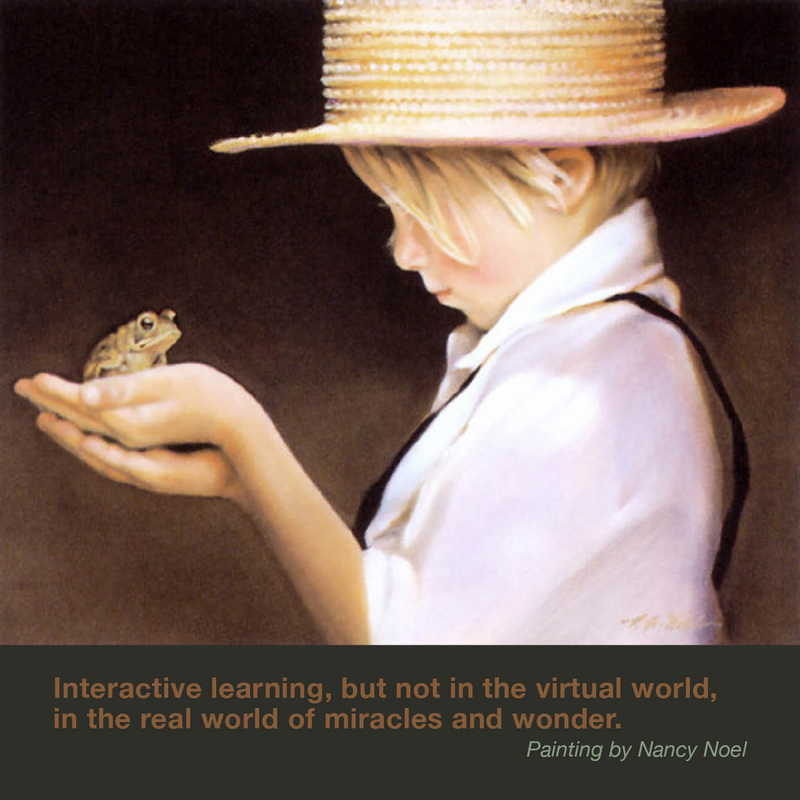
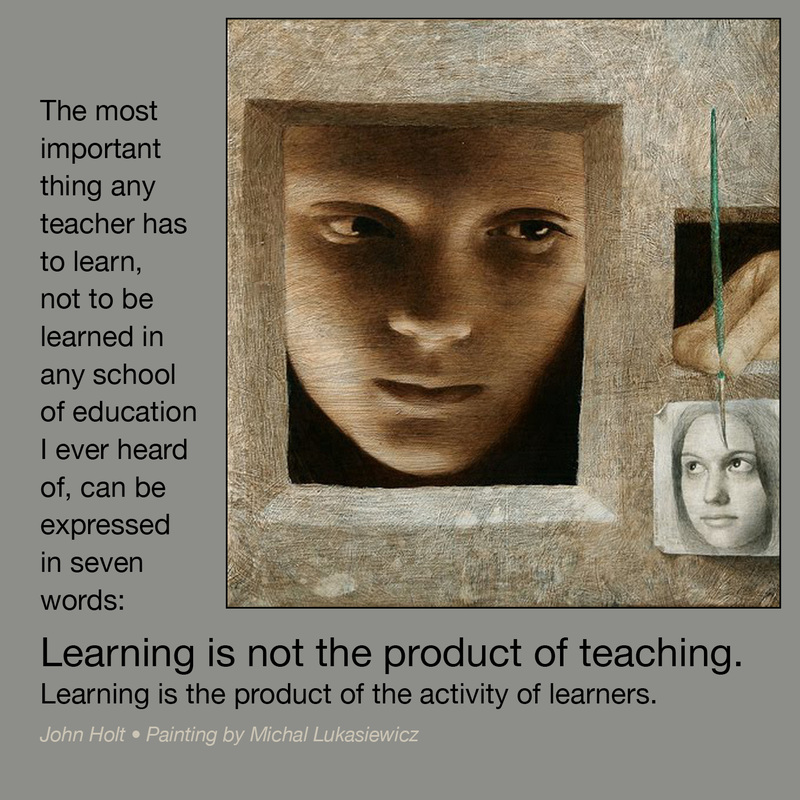
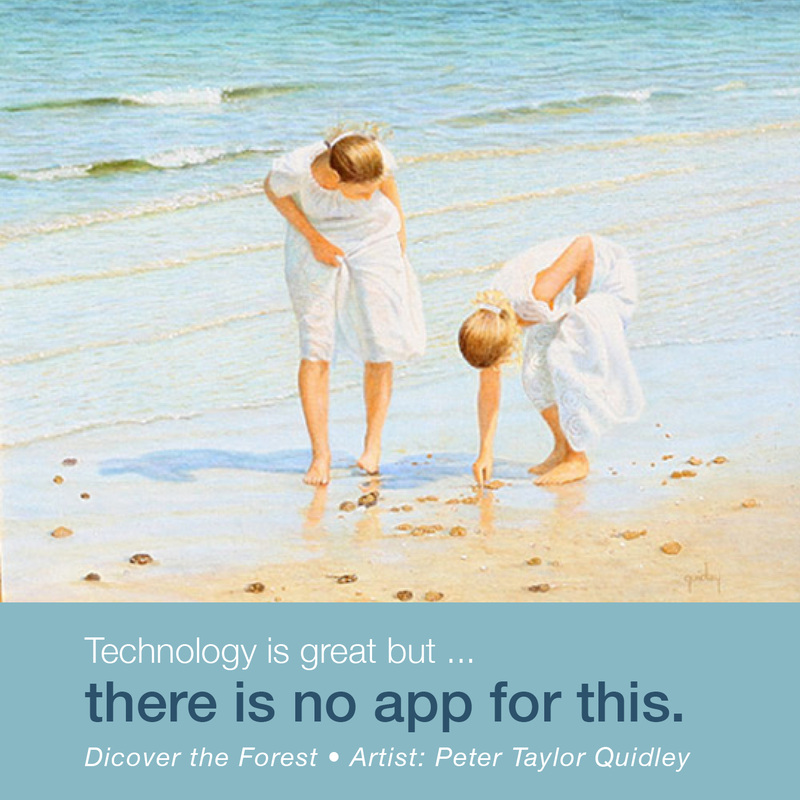
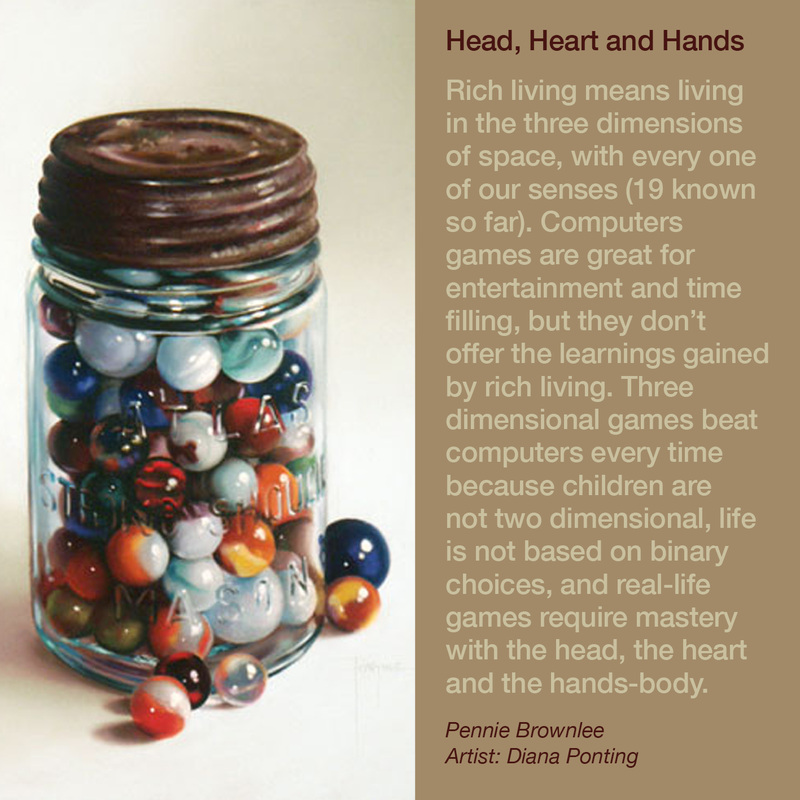
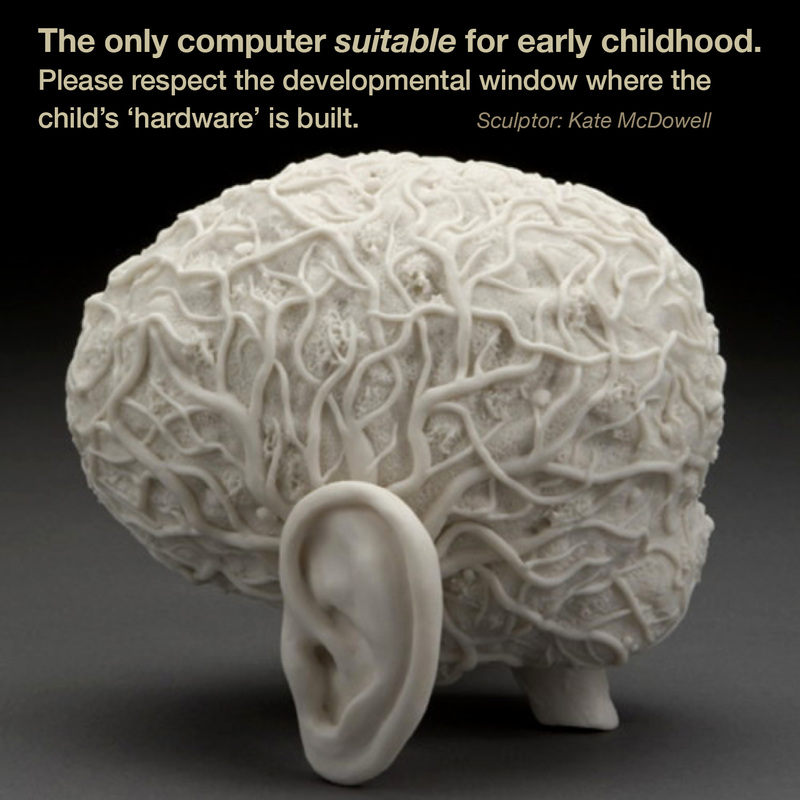
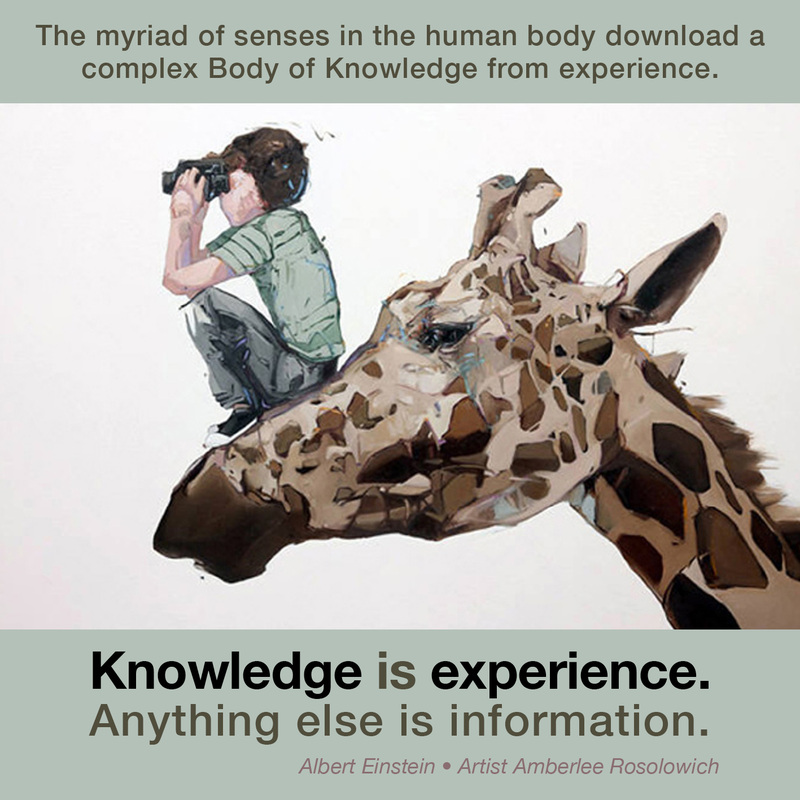

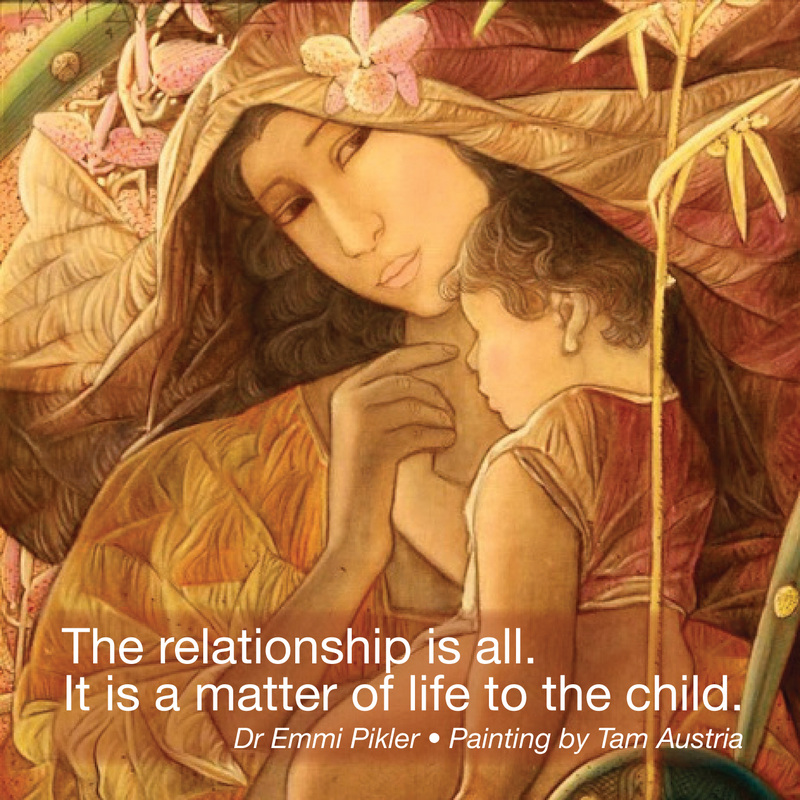



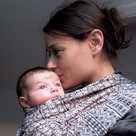




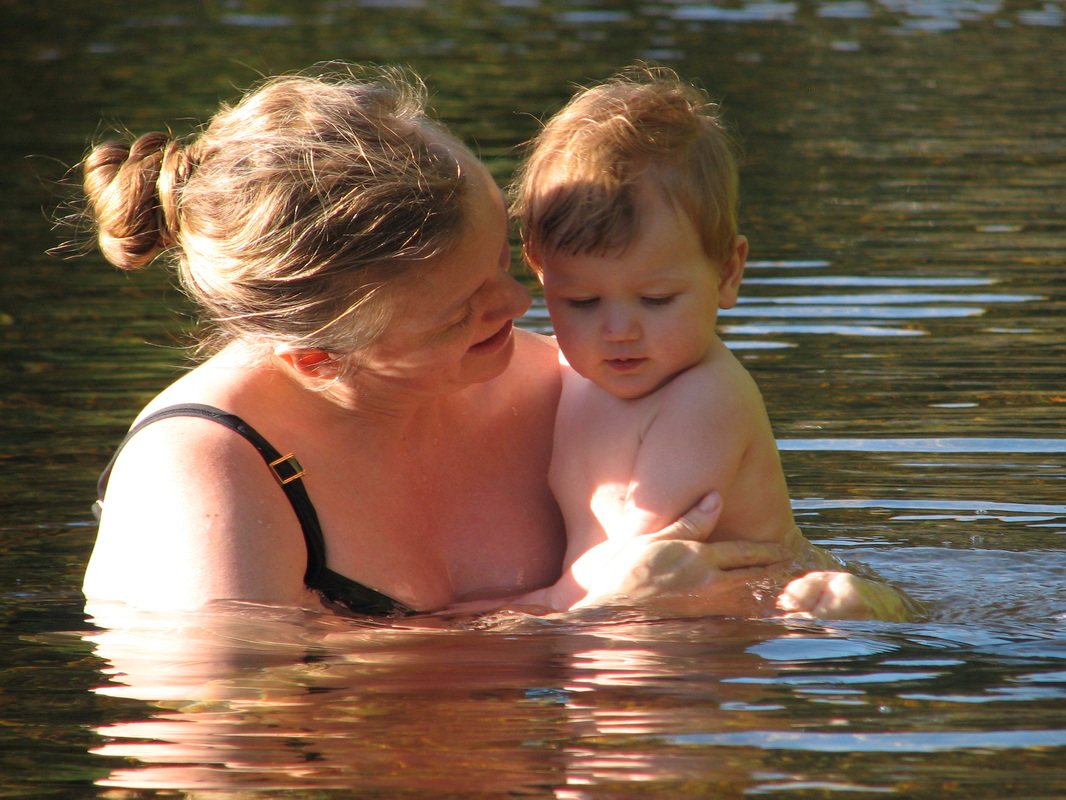
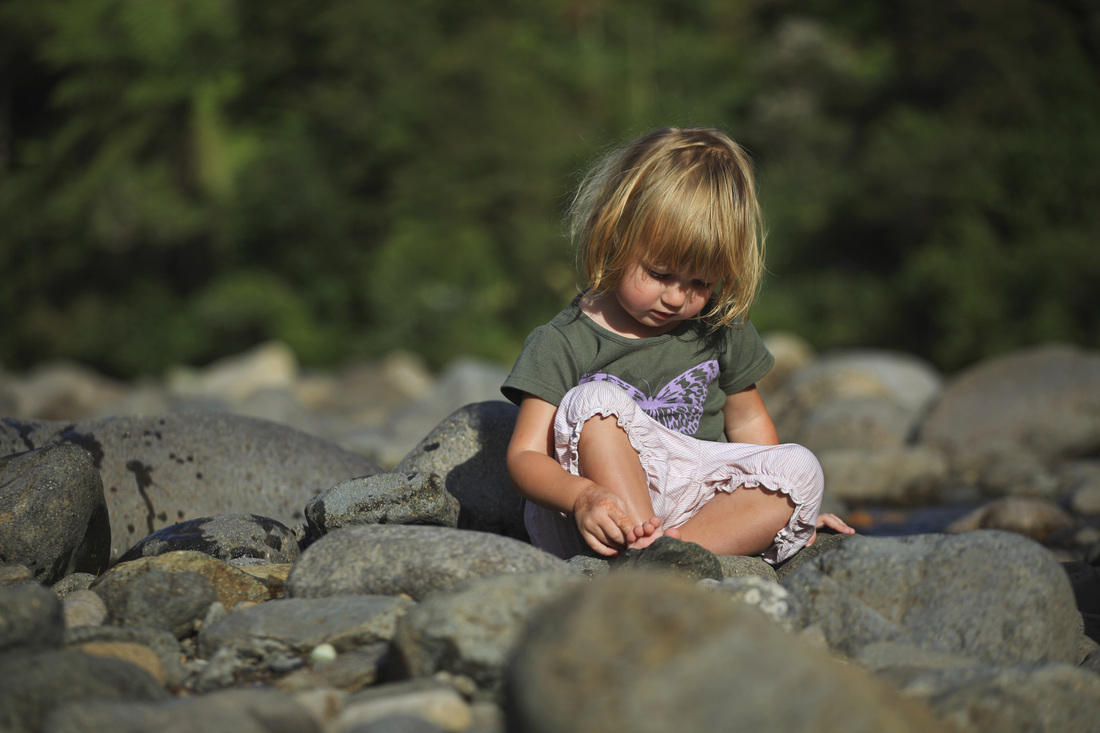
 RSS Feed
RSS Feed
